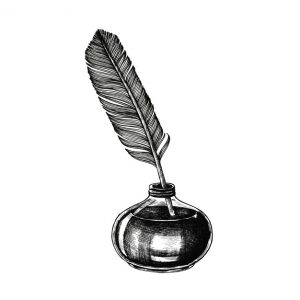Is your shower barely dripping or your washing machine taking forever to fill up? These could be signs of low house water pressure —a frustrating issue many California homeowners face. Whether you live in San Jose or Fresno, knowing how to check your water pressure can help you troubleshoot problems fast.
In this guide, we’ll show you how to measure water pressure at home. We’ll also cover what causes pressure issues, what normal pressure looks like, and when it’s time to call a 24 hour plumber in San Jose .
Why Does Water Pressure Matter?
Water pressure affects every part of your home’s plumbing. Low pressure can:
Make showers less satisfying
Slow down dishwashers and washing machines
Affect water heaters
Cause toilets to refill slowly
High pressure isn’t good either. It can damage pipes, water heaters, and appliances over time. That’s why understanding your water pressure is key to maintaining a healthy plumbing system.
Common Causes of Low House Water Pressure
Low pressure can come from a variety of sources. Here are some of the most common:
1. Clogged Pipes
Mineral buildup from hard water—common in many parts of California—can clog your pipes over time.
2. Old or Corroded Pipes
Galvanized steel pipes, often found in older homes, corrode internally and restrict flow.
3. Leaky Pipes
Hidden leaks underground or in walls reduce water volume and pressure.
4. Faulty Pressure Regulator
Many homes in California have a pressure regulator near the main water shutoff. If it’s failing, pressure drops.
5. Municipal Water Supply Issues
Sometimes the problem is with the city’s system. Maintenance or water main breaks can lower pressure temporarily.
6. Shared Supply Lines
In densely populated areas like San Jose or Sacramento, multiple homes might share the same supply line. Heavy usage can reduce pressure.
California Cities Where Water Pressure Problems Are Common
If you’re experiencing pressure issues, you’re not alone. These California cities often report low house water pressure :
San Jose – Older infrastructure and population growth
Fresno – High mineral content in water
Sacramento – Aging water systems in historic neighborhoods
Los Angeles – Complex water distribution networks
San Diego – Water restrictions and regional supply issues
If you live in these areas and suspect a problem, contacting a 24 hour plumber in San Jose or your local area can save you from long-term damage.
Tools You’ll Need to Measure Water Pressure
Measuring water pressure is easier than you might think. Here’s what you need:
A water pressure gauge (available at hardware stores)
A standard hose bib (outdoor faucet)
Optional: a timer or smartphone stopwatch
Step-by-Step: How to Measure Water Pressure in Your Home
Follow these steps to test your water pressure accurately:
Step 1: Turn Off Water-Using Appliances
Make sure no one is using sinks, washing machines, or showers. This ensures an accurate baseline reading.
Step 2: Locate an Outdoor Spigot
Preferably one closest to where the main water line enters your home.
Step 3: Attach the Pressure Gauge
Screw the gauge tightly onto the spigot. Make sure the rubber washer is inside to prevent leaks.
Step 4: Open the Faucet Fully
Turn on the water and watch the gauge. It will quickly show your current pressure in PSI (pounds per square inch).
Step 5: Read the Measurement
Normal pressure : 40–60 PSI
Low pressure : Below 40 PSI
High pressure : Over 75 PSI
Write down the number. If it’s under 40 PSI, you likely have low house water pressure and should take further action.
Bonus Tip: Test at Multiple Faucets
If the pressure is low at one spigot but normal at others, the issue could be local—like a blocked pipe. Test bathroom faucets, kitchen taps, and other outdoor spigots for comparison.
What to Do If You Have Low Water Pressure
If your reading is below 40 PSI, try these fixes:
1. Check Your Pressure Regulator
A faulty regulator could be the cause. It’s usually located near the water shutoff valve.
2. Inspect for Leaks
Wet spots in the yard, high water bills, or moldy smells can point to leaks.
3. Clean Faucet Aerators
Sometimes it’s not your whole house—just a clogged aerator on a sink.
4. Call a Professional
If you can’t find the source or need an urgent fix, contact a 24 hour plumber San Jose or your local area. They can run diagnostics and make repairs safely.
When to Call a 24 Hour Plumber in San Jose
Some issues require immediate help. Call a professional if:
You notice water pooling near the foundation
Pipes are making loud banging noises
There’s a sudden drop in pressure throughout the house
You suspect a burst pipe or underground leak
A 24 hour plumber in San Jose can inspect your system any time of day or night and prevent major water damage.
Preventing Future Water Pressure Problems
To avoid repeat issues, follow these best practices:
Install a whole-house water filter if you live in hard water areas
Replace corroded pipes with copper or PEX
Schedule annual plumbing inspections
Install a pressure booster if your home consistently has low pressure
Final Thoughts
Learning how to measure water pressure in your house is a smart move for any homeowner. It can help you catch problems early, improve your plumbing efficiency, and save you from costly repairs.
If you’re experiencing low house water pressure , especially in areas like San Jose or Sacramento, don’t wait. Use a pressure gauge to test your system today.


